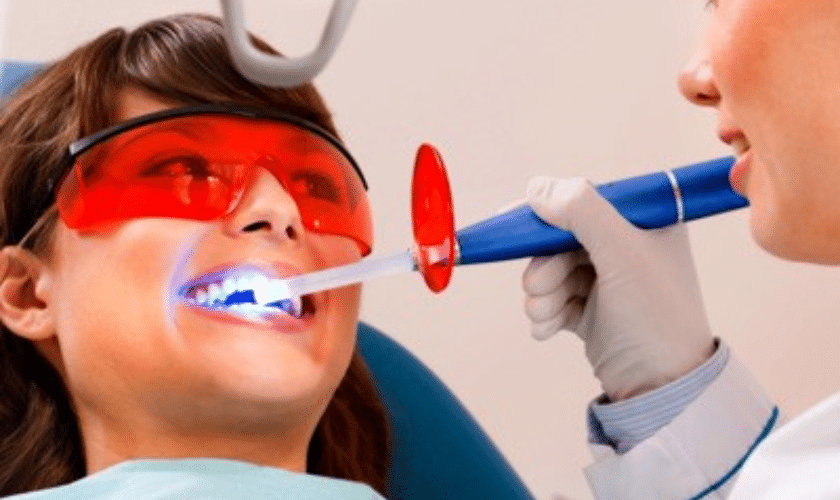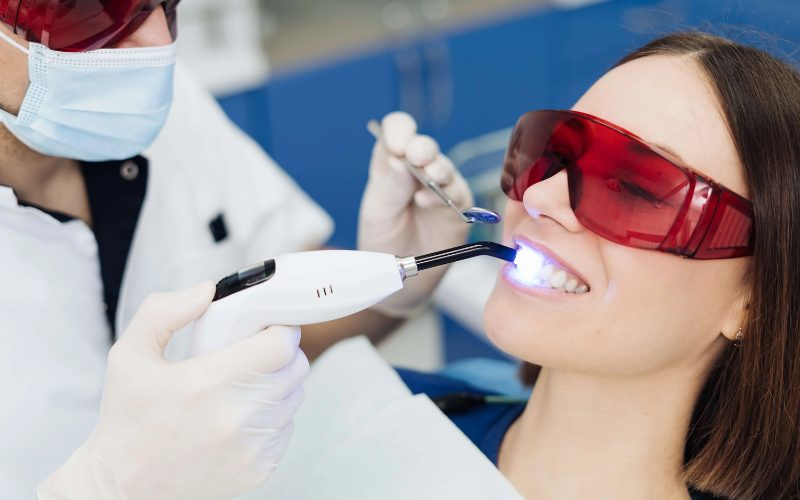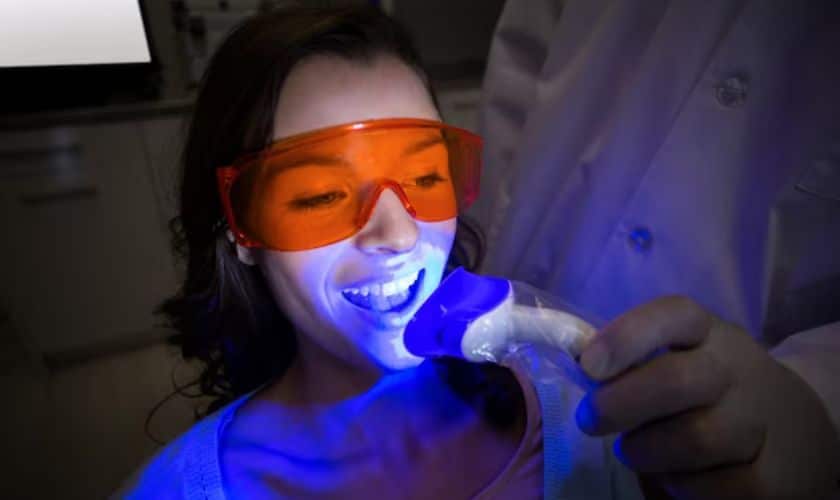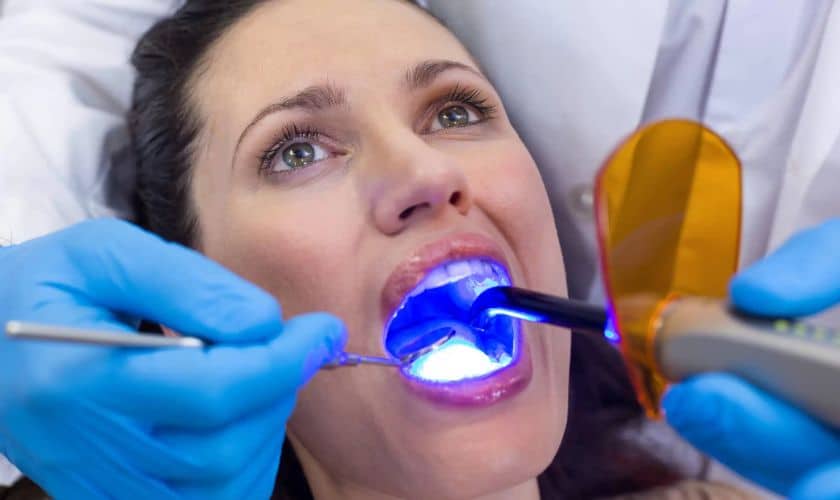
Are you someone who dreads going to the dentist because of the sound and sensation of dental equipment? Well, we have some exciting news for you! Laser dentistry is on the rise and changing oral healthcare as we know it. This innovative technology uses a concentrated beam of light to perform various dental procedures with minimal discomfort and maximum precision. In this article, we will explore what laser dentistry is, its benefits, types of procedures that can be done with it, how it works, and most importantly – whether or not it’s safe. Read on to discover how laser dentistry is revolutionizing oral health.
What is Laser Dentistry?
Laser dentistry is a minimally invasive dental technique that uses laser beams to perform various dental procedures. The concentrated beam of light from the laser can be used for both hard and soft tissue treatments, including removing decay, whitening teeth, gum reshaping, treating infections, and more.
Unlike traditional dental instruments such as drills and scalpels, laser dentistry causes little to no discomfort during treatment. Laser beams also reduce bleeding during oral surgeries as they cauterize blood vessels while cutting through tissue.
There are two main types of lasers used in dentistry: hard tissue lasers and soft tissue lasers. Hard tissue lasers are commonly used for cavity detection and preparation before filling teeth with materials like resin or amalgam. Whereas soft tissue lasers work on gum-related issues such as periodontal disease treatment or reshaping gums.
Laser dentistry offers patients quicker healing times after undergoing treatments since it doesn’t involve any major incisions or sutures compared to traditional surgery methods.
What Are The Benefits Of Laser Dentistry?
Laser dentistry is a rapidly growing field that has transformed the world of oral health. Using high-powered beams of light, dental professionals can now perform various procedures with greater precision and efficiency than ever before.
One significant benefit of laser dentistry is its minimally invasive nature. Unlike traditional methods which may require incisions or sutures, lasers can target specific areas without damaging surrounding tissue. This results in less discomfort for patients during and after treatment as well as faster recovery times.
Another advantage is the decreased need for anesthesia or sedation. Because lasers are gentle and precise, many procedures can be done without numbing agents or other medications that may cause side effects or allergic reactions.
Additionally, laser dentistry often requires fewer appointments to achieve optimal results compared to conventional techniques. This means less time spent in the dentist’s chair and more time enjoying life outside of it.
The benefits of laser dentistry are numerous and varied, making it an increasingly popular choice among both dental professionals and patients alike.
What Types Of Procedures Can Be Done With Laser Dentistry?
Laser dentistry is a versatile tool that can be used in various dental procedures. It’s especially beneficial for patients who experience anxiety and discomfort during traditional dental treatments. One of the most common uses of laser dentistry is in treating gum disease. The laser energy targets and removes infected tissue while leaving healthy tissue intact.
Another procedure that can be done with laser dentistry is teeth whitening. Laser light activates the bleaching agent, resulting in brighter and whiter teeth in a shorter amount of time than traditional methods.
Lasers are also useful for removing decayed or damaged tooth material before filling cavities or preparing teeth for crowns or bridges. This method eliminates the need for noisy drills, which may cause discomfort to some patients.
Additionally, lasers can help reshape gums by removing excess tissue and contouring them to enhance the appearance of your smile. They’re also effective in treating mouth sores, and reducing pain associated with cold sores, fever blisters, and aphthous ulcers.
Laser dentistry provides a minimally invasive option for many dental procedures that would otherwise require more extensive treatments.
How Does Laser Dentistry Work?
Laser dentistry uses highly concentrated beams of light to treat a variety of dental problems. The laser is an incredibly precise tool that can selectively target and remove tissue without damaging surrounding areas.
The process begins with the dentist selecting the appropriate wavelength for the specific procedure required. Next, the patient will be given protective eyewear to safeguard their eyes from any potential damage caused by exposure to the laser.
Once ready, the dentist will direct a beam of light at the area requiring treatment. This could involve removing decayed or damaged tissue, reshaping gums or teeth, or even whitening teeth.
As soon as treatment is complete, patients are free to leave without experiencing any discomfort – no shots, no drills, and little-to-no pain involved!
Laser dentistry offers several benefits over traditional methods including faster healing times and reduced risk of infection since there’s less bleeding during procedures. While not suitable for all dental procedures yet (such as fillings), advancements in technology mean that more treatments will become available using lasers in the future.
Is Laser Dentistry Safe?
When it comes to dental procedures, safety is always a top concern for patients. Laser dentistry is considered safe when performed by a trained and experienced dentist or oral surgeon. The use of lasers in dentistry has been approved by the FDA since the early 1990s.
One of the key benefits of laser dentistry is that it can often be less invasive than traditional methods, which can lead to faster healing times and reduced risk of infection. Additionally, lasers are precise and targeted, meaning they can remove only the necessary tissue without damaging surrounding areas.
However, as with any medical procedure, there are some risks associated with laser dentistry. For example, if not used properly or if precautions aren’t taken during treatment (such as wearing protective eyewear), lasers could potentially cause damage to nearby tissue or even result in burns.
It’s important for patients to discuss all potential risks and benefits with their dentist before undergoing any type of dental procedure – including those involving lasers. By working closely with a qualified professional who understands how to safely use these advanced tools, patients can enjoy improved oral health outcomes without undue worry about safety concerns.
Laser dentistry is a game-changer in the field of oral health. It offers many benefits such as less pain and discomfort during procedures, faster healing times, and more precise results. With its versatility, it can be used for various treatments such as teeth whitening, gum reshaping, and cavity removal.
Although laser dentistry may have some disadvantages like high cost or being unsuitable for certain patients with specific conditions, its advantages outweigh them significantly.
As technology progresses in different fields of medicine including dentistry; we can only hope that new advancements will continue to emerge which will help make treatment options even better than they already are today.




